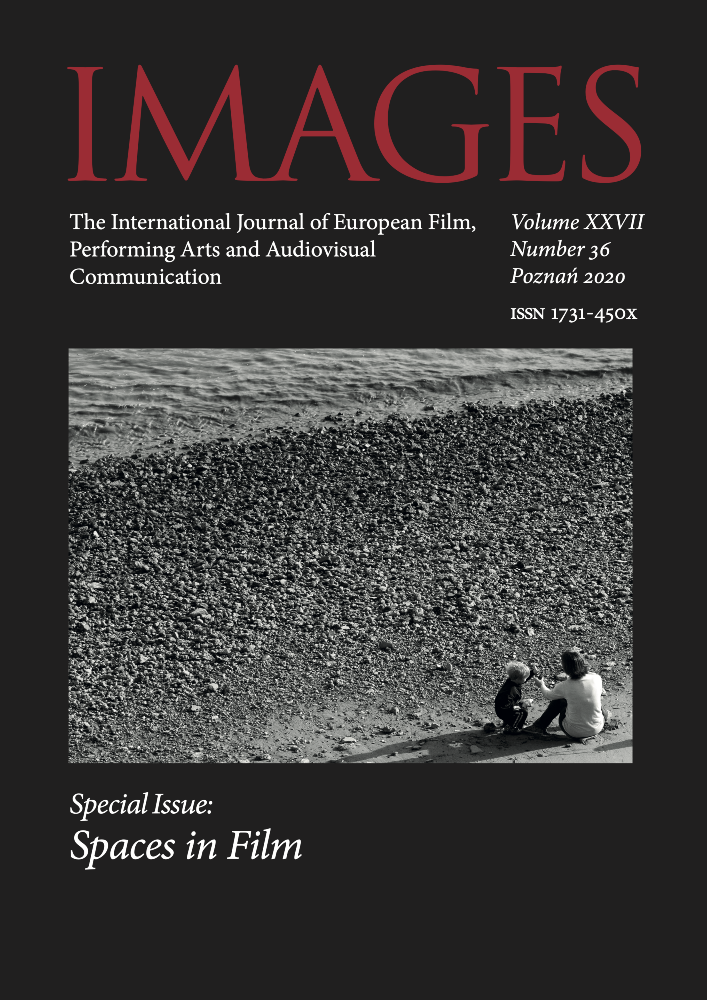Abstract
The image of Warsaw in ruins after World War II is an important motif in Polish documentary and feature cinema in the years 1944–1956. In the text, I discuss the images of the city captured by the first chroniclers as ‘basic’, which then became archetypical icons of the city’s destruction. I point out that the aesthetics of destruction, recorded in Andrzej Panufnik’s early film Ballada f-moll [Ballade in f minor], Jerzy Bossak’s Most [Bridge] and Tadeusz Makarczyński’s Suita warszawska [Warsaw Suite] proved to be exemplary for other artists. I show that the destruction of urban and architectural structures was inspiring for directors: it served as a documentary record, a basis for
constructing scripts, and dominant aesthetic, often providing a persuasive argument and serving to shape emotions. References to the resentments of the audience and the anatomy of the ruins were among the elements that shaped the ideological attitudes of various parts of Polish society. For some directors it was also a catharsis after the trauma of the Holocaust.
References
Bossak J. (wypow.), Ab urbe condita…, „Film” 1980, nr 3
Cieśliński M., Piękniej niż w życiu. Polska Kronika Filmowa 1944–1994, Warszawa 2006
Czeczot-Gawrak Z., Bruliony rozmów z pionierami kroniki i dokumentu PKF/WFD prowadzone w latach 1978 i 1979. Rękopisy. Instytut Sztuki Polskiej Akademii Nauk w Warszawie
Gebethner S., „Warszawa oskarża” – wystawa w Muzeum Narodowym w Warszawie (3 maja 1945 – 28 stycznia 1946), „Rocznik Muzeum Narodowego w Warszawie” 1976, t. 20
Hendrykowski M., Dokument po wojnie. Lata 1945–1955, [w:] Historia polskiego filmu dokumentalnego (1945–2014), red. M. Hendrykowska, Poznań 2015
Lemann-Zajiček J., Kino i polityka. Polski film dokumentalny 1945–1949, Łódź 2003
Michałek B., Sztuka faktów. Z historii filmu dokumentalnego, Warszawa 1958
Przylipiak M., Poetyka kina dokumentalnego, Gdańsk 2000
Sowińska I., Chopin idzie do kina, Kraków 2013
Sowińska I., Polska muzyka filmowa 1945–1968, Katowice 2006
Świeżyński W., Film dokumentalny, [w:] Historia filmu polskiego, red. J. Bocheńska i in., Warszawa 1974, s. 109–110
White H., Historiografia i historiofotia, przeł. Ł. Zaremba, [w:] Film i historia. Antologia, red. I. Kurz, Warszawa 2008, s. 117–127
Wróblewska M., Fotografie ruin. Ruiny fotografii 1944–2014. Muzeum Warszawy, Warszawa 2014
Wysocka E., Wirtualne ciało sztuki. Ochrona i udostępnianie dzieł audiowizualnych, Warszawa 2013
License
Copyright (c) 2020 Marek Kosma Cieśliński

This work is licensed under a Creative Commons Attribution 4.0 International License.

